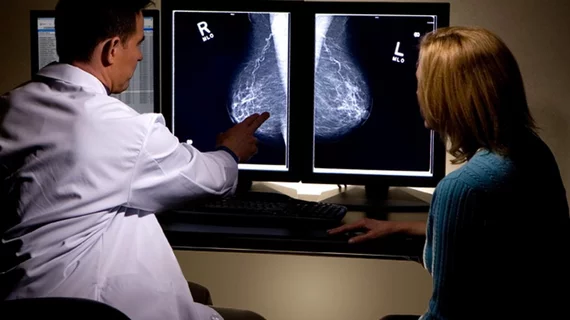Synthetic mammography, DBT similar to digital mammography in detecting microcalcifications at breast screening
Synthetic mammogram paired with digital breast tomosynthesis (DBT) achieved similar sensitivity and specificity as full-field digital mammography (FFDM) in identifying microcalcifications during breast screening, according to an Oct. 2 study in Radiology.
As part of the retrospective multi-reader observer study, researchers performed FFDM and DBT on 72 screening mammograms that were recalled for microcalcifications between June 2015 and August 2016. Data consisted of 54 scans with benign findings, 18 with malignant microcalcifications and 20 controls.
Overall, compared to FFDM, synthetic mammography combined with DBT achieved similar sensitivity and specificity, the authors noted.
In FFDM, combined readers sensitivity for all microcalcifications was 80 percent, and 92 percent for malignant findings. The method achieved a 98 percent specificity for all and malignant microcalcifications.
Synthetic mammogram and DBT achieved a combined reader sensitivity for all microcalcifications of 75 percent, and 94 percent for malignant nodules. In terms of specificity, the paired technique achieved 95 percent for both overall combined reader microcalcifications and malignant.
“Synthetic mammography in conjunction with digital breast tomosynthesis can potentially be used for detection of microcalcifications warranting recall, without the need for a separate full-field digital mammography acquisition,” wrote first author Yi-Chen Lai, with Taipei Veterans General Hospital in Taiwan, and colleagues.
The researchers did note their study contained limitations including the study’s small sample size, which may have limited the ability to detect a difference in sensitivity or specificity of seven percent or less between study groups, they wrote. Going forward, the authors argued prospective reader studies featuring more images should be conducted.

